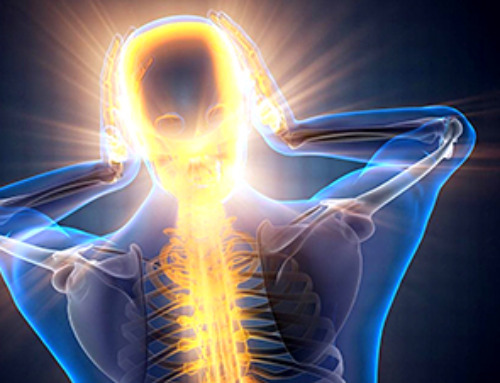Brigham and Women’s Hospital’s TIMI Study Group reports that in patients with prior ischemic stroke, very low achieved LDL-cholesterol correlated with fewer major adverse cardiovascular events and fewer recurrent strokes, without an apparent increase in hemorrhagic stroke.
Study background and patient population
Patients with prior ischemic stroke face a high risk for recurrence and other cardiovascular events. Previous randomized trials of PCSK9 inhibitors and ezetimibe showed benefits of intensive LDL-cholesterol reduction in unselected atherosclerotic disease populations. Limited data existed for the specific subgroup with prior ischemic stroke, leaving uncertainty about the benefits and safety of achieving very low LDL-cholesterol levels in this cohort.
In the study, “Efficacy and Safety of Very Low Achieved LDL-Cholesterol in Patients with Prior Ischemic Stroke,” published as an accepted manuscript in Circulation, researchers analyzed data from FOURIER and its open-label extension to examine the relationship between achieved LDL-cholesterol and long-term incidence of a composite cardiovascular endpoint and stroke outcomes.
Analysis included 5,291 patients with prior ischemic stroke more than 4 weeks before enrollment. Median age was 65 years with 34.1% women. Median time from prior stroke to trial entry was 3.3 years.
LDL-cholesterol categories and outcomes
LDL-cholesterol categories included under 20 mg/dL for 666 patients, 20 to 39 mg/dL for 1,410 patients, 40 to 54 mg/dL for 586 patients, 55 to 69 mg/dL for 508 patients, and 70 mg/dL or more for 2,121 patients.
Analyses demonstrated monotonic decreases in the adjusted annualized incidence of the primary composite and key secondary composite with lower achieved LDL-cholesterol levels on a continuous scale, with p-trend <0.001 for each.
Compared with ≥70 mg/dL, LDL-cholesterol <40 mg/dL corresponded to an incidence rate ratio of 0.69 for the primary endpoint and 0.73 for the key secondary endpoint.
Stroke recurrence
Recurrent stroke incidence declined as LDL-cholesterol decreased for all stroke and ischemic stroke.
Comparison of <40 mg/dL with ≥70 mg/dL yielded an incidence rate ratio of 0.73 for all stroke and 0.75 for ischemic stroke. Hemorrhagic stroke events were infrequent and showed no relationship to achieved LDL-cholesterol with a p-trend of 0.85.
Patients with prior ischemic stroke receiving lipid-lowering therapy, lower LDL-cholesterol below 40 mg/dL appeared to be associated with lower incidence of major adverse cardiovascular events and recurrent stroke.
Findings tentatively support consideration of more intensive LDL-cholesterol lowering in this population.
Written for you by our author Justin Jackson, edited by Gaby Clark, and fact-checked and reviewed by Robert Egan—this article is the result of careful human work. We rely on readers like you to keep independent science journalism alive. If this reporting matters to you, please consider a donation (especially monthly). You’ll get an ad-free account as a thank-you.
More information: Victorien Monguillon et al, Efficacy and Safety of Very Low Achieved LDL-Cholesterol in Patients with Prior Ischemic Stroke, Circulation (2025). DOI: 10.1161/circulationaha.125.077549
News
Very low LDL-cholesterol correlates to fewer heart problems after stroke
Brigham and Women's Hospital's TIMI Study Group reports that in patients with prior ischemic stroke, very low achieved LDL-cholesterol correlated with fewer major adverse cardiovascular events and fewer recurrent strokes, without an apparent increase [...]
“Great Unified Microscope” Reveals Hidden Micro and Nano Worlds Inside Living Cells
University of Tokyo researchers have created a powerful new microscope that captures both forward- and back-scattered light at once, letting scientists see everything from large cell structures to tiny nanoscale particles in a single shot. Researchers [...]
Breakthrough Alzheimer’s Drug Has a Hidden Problem
Researchers in Japan found that although the Alzheimer’s drug lecanemab successfully removes amyloid plaques from the brain, it does not restore the brain’s waste-clearing system within the first few months of treatment. The study suggests that [...]
Concerning New Research Reveals Colon Cancer Is Skyrocketing in Adults Under 50
Colorectal cancer is striking younger adults at alarming rates, driven by lifestyle and genetic factors. Colorectal cancer (CRC) develops when abnormal cells grow uncontrollably in the colon or rectum, forming tumors that can eventually [...]
Scientists Discover a Natural, Non-Addictive Way To Block Pain That Could Replace Opioids
Scientists have discovered that the body can naturally dull pain through its own localized “benzodiazepine-like” peptides. A groundbreaking study led by a University of Leeds scientist has unveiled new insights into how the body manages pain, [...]
GLP-1 Drugs Like Ozempic Work, but New Research Reveals a Major Catch
Three new Cochrane reviews find evidence that GLP-1 drugs lead to clinically meaningful weight loss, though industry-funded studies raise concerns. Three new reviews from Cochrane have found that GLP-1 medications can lead to significant [...]
How a Palm-Sized Laser Could Change Medicine and Manufacturing
Researchers have developed an innovative and versatile system designed for a new generation of short-pulse lasers. Lasers that produce extremely short bursts of light are known for their remarkable precision, making them indispensable tools [...]
New nanoparticles stimulate the immune system to attack ovarian tumors
Cancer immunotherapy, which uses drugs that stimulate the body’s immune cells to attack tumors, is a promising approach to treating many types of cancer. However, it doesn’t work well for some tumors, including ovarian [...]
New Drug Kills Cancer 20,000x More Effectively With No Detectable Side Effects
By restructuring a common chemotherapy drug, scientists increased its potency by 20,000 times. In a significant step forward for cancer therapy, researchers at Northwestern University have redesigned the molecular structure of a well-known chemotherapy drug, greatly [...]
Lipid nanoparticles discovered that can deliver mRNA directly into heart muscle cells
Cardiovascular disease continues to be the leading cause of death worldwide. But advances in heart-failure therapeutics have stalled, largely due to the difficulty of delivering treatments at the cellular level. Now, a UC Berkeley-led [...]
The basic mechanisms of visual attention emerged over 500 million years ago, study suggests
The brain does not need its sophisticated cortex to interpret the visual world. A new study published in PLOS Biology demonstrates that a much older structure, the superior colliculus, contains the necessary circuitry to perform the [...]
AI Is Overheating. This New Technology Could Be the Fix
Engineers have developed a passive evaporative cooling membrane that dramatically improves heat removal for electronics and data centers Engineers at the University of California San Diego have created an innovative cooling system designed to greatly enhance [...]
New nanomedicine wipes out leukemia in animal study
In a promising advance for cancer treatment, Northwestern University scientists have re-engineered the molecular structure of a common chemotherapy drug, making it dramatically more soluble and effective and less toxic. In the new study, [...]
Mystery Solved: Scientists Find Cause for Unexplained, Deadly Diseases
A study reveals that a protein called RPA is essential for maintaining chromosome stability by stimulating telomerase. New findings from the University of Wisconsin-Madison suggest that problems with a key protein that helps preserve chromosome stability [...]
Nanotech Blocks Infection and Speed Up Chronic Wound Recovery
A new nanotech-based formulation using quercetin and omega-3 fatty acids shows promise in halting bacterial biofilms and boosting skin cell repair. Scientists have developed a nanotechnology-based treatment to fight bacterial biofilms in wound infections. The [...]
Researchers propose five key questions for effective adoption of AI in clinical practice
While Artificial Intelligence (AI) can be a powerful tool that physicians can use to help diagnose their patients and has great potential to improve accuracy, efficiency and patient safety, it has its drawbacks. It [...]




















